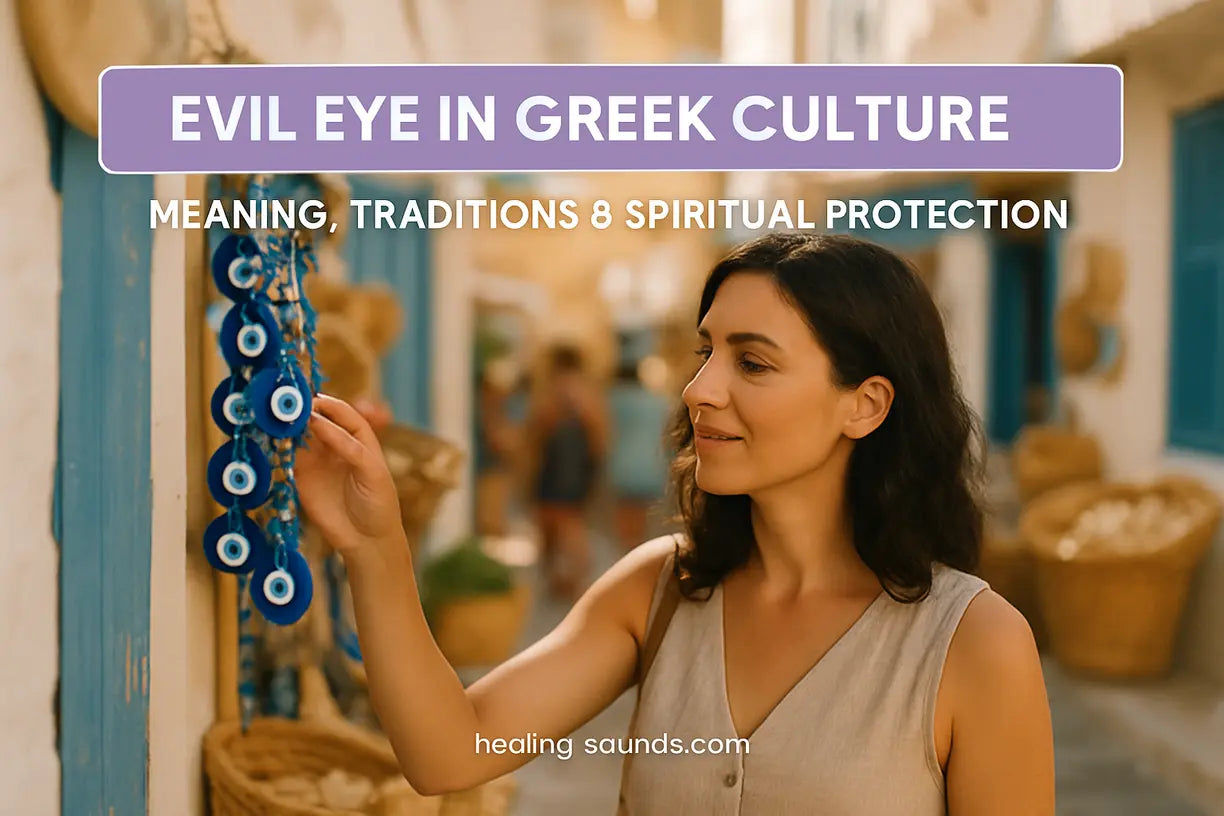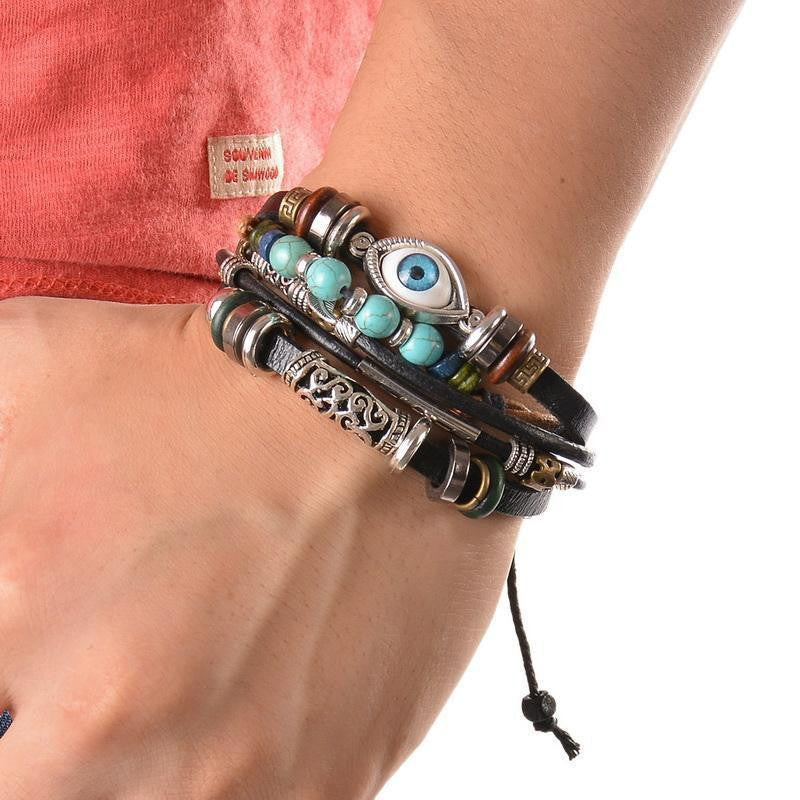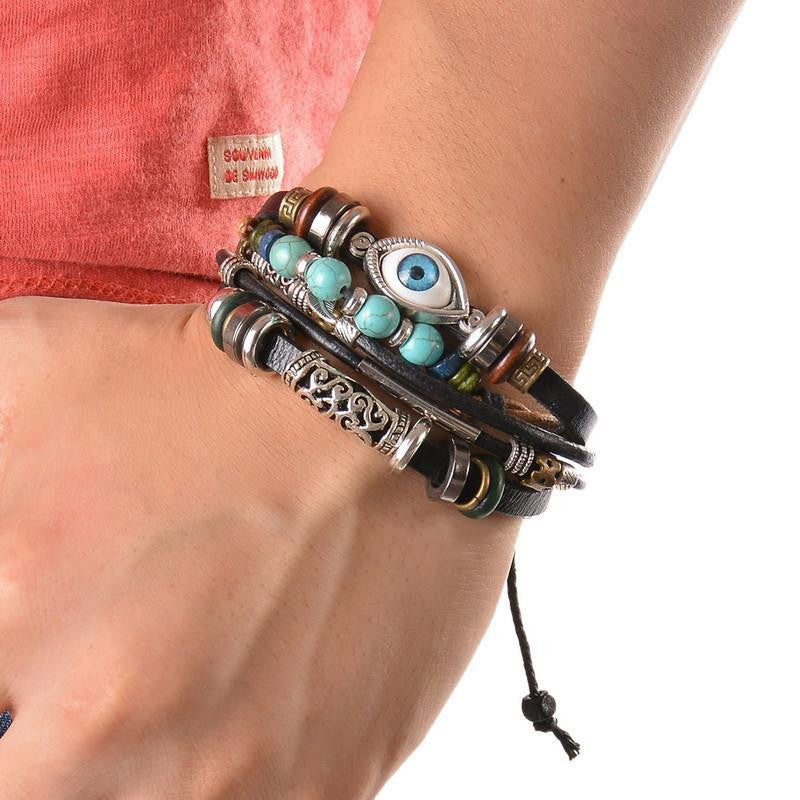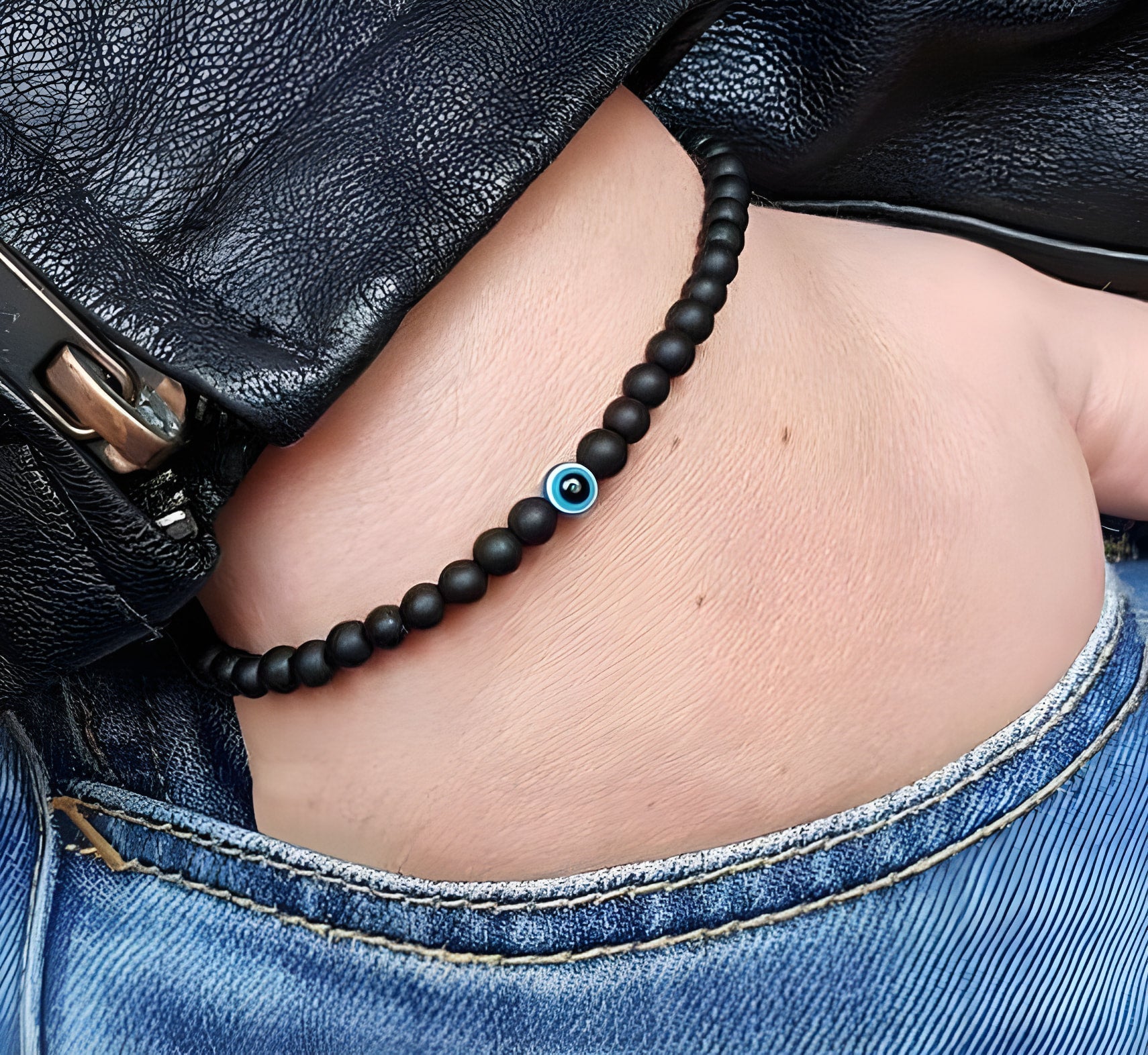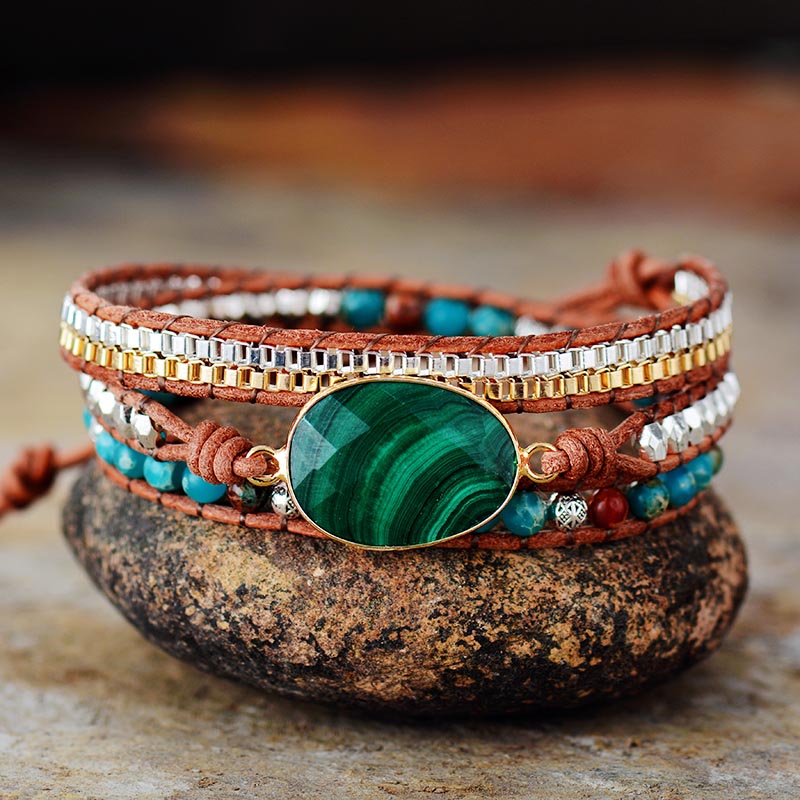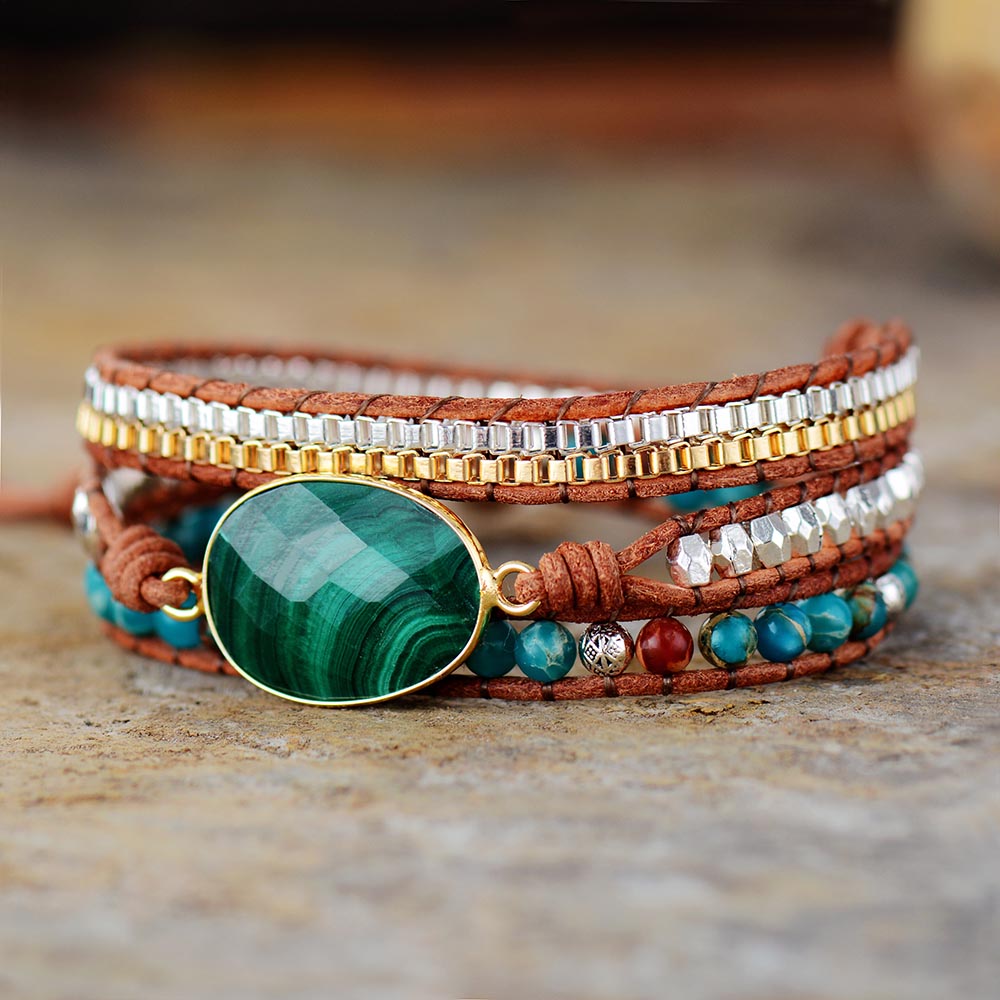En Grèce, le concept du mauvais œil , connu sous le nom de « mati » (μάτι), est une croyance culturelle profondément ancrée, qui imprègne des siècles d'histoire, de folklore et de vie quotidienne. Pour ceux qui s'intéressent à la protection spirituelle, aux traditions anciennes ou à la culture vivante de la Grèce, comprendre le mauvais œil offre un aperçu fascinant d'un monde où le symbolisme a un pouvoir profond. Cet article explore la riche signification du mauvais œil dans la culture grecque, son importance historique, les traditions qui l'entourent et la manière dont les bijoux contre le mauvais œil constituent une puissante amulette contre la négativité.
Comprendre le « Mati » : le mauvais œil grec
La croyance au mauvais œil n'est pas propre à la Grèce, mais elle occupe une place particulièrement importante dans la tradition hellénique. Elle témoigne de la préoccupation humaine persistante face à l'envie et à son potentiel néfaste. Pour les voyageurs en Grèce, les amateurs de symbolisme et les personnes en quête de chance, l'omniprésent talisman bleu et blanc est une vision courante et captivante.
Qu'est-ce que le « Mati » et sa signification fondamentale ?
Dans la culture grecque, le mauvais œil (mati) fait référence à la croyance selon laquelle un regard malveillant, souvent alimenté par l'envie ou la jalousie, peut causer malheur, maladie ou malchance à celui qui le reçoit. L'intention n'est pas forcément de nuire ; on pense parfois qu'une admiration excessive, voire un compliment formulé avec une certaine jalousie, peut déclencher involontairement des effets négatifs. La signification fondamentale de l'œil repose sur la protection contre cette énergie invisible et néfaste. Le symbole de l'œil, souvent représenté par un cercle concentrique, est un talisman apotropaïque , c'est-à-dire destiné à éloigner le mal ou les influences maléfiques.
Les racines profondes : le mauvais œil dans la Grèce antique et la mythologie
Le concept du mauvais œil remonte à l'Antiquité classique. Les Grecs de l'Antiquité, notamment des philosophes comme Platon et Plutarque, mentionnaient ce phénomène. Des découvertes archéologiques en Grèce antique, notamment des vases à boire peints d'œil et d'autres artefacts, suggèrent que les croyances entourant le mauvais œil étaient répandues. Ces talismans contre le mauvais œil, appelés « matiasma » en grec, étaient utilisés pour éloigner les énergies négatives. Cette croyance a perduré pendant l'époque byzantine et jusqu'en Grèce moderne, témoignant de ses profondes racines culturelles. On en trouve de nombreuses références dans la mythologie grecque, où dieux comme mortels étaient exposés aux regards envieux.
Croyances et traditions clés entourant le mauvais œil en Grèce
En Grèce, les traditions liées au mauvais œil sont diverses et font partie intégrante de la vie quotidienne. Ces pratiques se transmettent de génération en génération, reflétant une compréhension collective de la manière de gérer et de neutraliser les menaces spirituelles potentielles.
Couleurs de protection : pourquoi le bleu est prédominant
La forme la plus reconnaissable de l'amulette grecque contre le mauvais œil est un œil bleu vif, souvent orné de cercles concentriques blancs, bleu clair et bleu foncé. Le bleu est considéré comme une couleur protectrice puissante contre le mauvais œil pour plusieurs raisons. On pense que le bleu, en particulier le bleu clair ou bleu ciel ( glaukos ), renvoie l'éclat nocif vers son émetteur. Cette couleur est également associée à la vérité, à la sérénité et aux cieux, ce qui renforce ses vertus protectrices. Bien que le bleu soit dominant, d'autres couleurs peuvent parfois être utilisées, mais le bleu reste la couleur la plus traditionnelle et la plus fiable pour la protection contre le mauvais œil chez les Grecs .

Rituels et pratiques pour conjurer le mauvais œil
Divers rituels et pratiques sont employés dans la culture grecque pour contrer les effets du mauvais œil. Si une personne est soupçonnée d'avoir été « matiasmenos » (touchée par le mauvais œil), les symptômes peuvent inclure des maux de tête soudains, des étourdissements, une fatigue inexpliquée ou une série de coups du sort. Un contre-rituel courant implique une prière spécifique, souvent récitée par un aîné (généralement une femme) qui possède le savoir. Cela peut impliquer la récitation de prières secrètes, le signe de croix et parfois l'utilisation d'huile et d'eau pour déterminer si le mauvais œil a été jeté et le chasser. Cracher, ou un « ftou ftou ftou » symbolique, est une autre façon courante, presque réflexive, pour les Grecs de se protéger d'une éventuelle négativité après un compliment ou une bonne nouvelle, afin d'éviter de jeter le mauvais œil par inadvertance.
Points clés à retenir sur les traditions grecques contre le mauvais œil :
- Le « Mati » est une croyance au mal causé par un regard envieux.
- Le bleu est la couleur principale des amulettes contre le mauvais œil en raison de ses propriétés réfléchissantes et protectrices.
- Des prières et des rituels spécifiques sont utilisés pour diagnostiquer et dissiper les effets du mauvais œil.
- Les gestes symboliques comme « ftou ftou ftou » sont des mesures préventives courantes.
Le pouvoir protecteur du symbole grec du mauvais œil
La popularité durable du symbole du mauvais œil en Grèce tient à son pouvoir supposé de protéger les individus, leurs proches et leurs biens des énergies négatives et du malheur. Il agit comme un gardien constant et silencieux.
Comment fonctionne le « Mati » : dévier la négativité
La fonction première d'une amulette grecque contre le mauvais œil est de servir de bouclier. On pense qu'elle capte tout regard malveillant dirigé vers celui qui la porte ou l'endroit qu'elle protège. Le symbole de l'œil lui-même est censé « regarder en arrière » vers la source de l'énergie négative, la déviant et neutralisant son potentiel nocif. Si une amulette contre le mauvais œil se brise ou est perdue, on pense souvent qu'elle a absorbé une forte dose de négativité et a ainsi rempli sa fonction protectrice, se sacrifiant pour protéger celui qui la porte.
Les bienfaits spirituels de l'acceptation du mauvais œil
Au-delà de la simple superstition, adhérer à la tradition du mauvais œil peut procurer un sentiment de réconfort spirituel et d'émancipation. Porter une amulette contre le mauvais œil ou en posséder une chez soi peut procurer un sentiment de sécurité et de paix intérieure. C'est un rappel tangible d'un riche héritage culturel et d'un lien avec d'anciennes pratiques protectrices. Pour beaucoup, elle renforce les intentions positives et sert de point focal pour conjurer non seulement la négativité extérieure, mais aussi les angoisses intérieures. Pour en savoir plus sur ce symbolisme plus large, pensez à consulter des ressources comme l' article de l'Encyclopédie de l'histoire mondiale sur le mauvais œil .
Bijoux contre le mauvais œil : une tradition grecque intemporelle
L'une des façons les plus populaires et tendance de se protéger du mauvais œil est de porter des bijoux. Des bracelets délicats aux pendentifs complexes, les bijoux contre le mauvais œil dans la culture grecque sont plus qu'un simple accessoire ; c'est une déclaration de foi personnelle et un talisman à porter.

Pourquoi porter des bijoux contre le mauvais œil ? Signification et fonction
Porter un bijou contre le mauvais œil est une pratique profondément personnelle, ancrée dans le désir de protection et de chance. On croit qu'en portant ce symbole près du corps, on se protège constamment des influences négatives. En Grèce, on voit des personnes de tous âges porter un bijou contre le mauvais œil, des nouveau-nés, souvent dotés d'une amulette, aux personnes âgées. Ce bijou rappelle constamment ce bouclier protecteur et procure un sentiment de sécurité au quotidien. Nombreux sont ceux qui pensent qu'il porte chance et éloigne le malheur des regards envieux.
Choisir sa protection : types de bijoux contre le mauvais œil grec
La variété des bijoux grecs contre le mauvais œil est vaste et répond à tous les goûts et préférences. Les modèles les plus courants incluent des bracelets, des colliers, des boucles d'oreilles et des bagues. Ces pièces arborent souvent le motif classique de l'œil bleu et blanc, mais peuvent également intégrer d'autres matériaux comme l'argent, l'or et les pierres précieuses. Le choix d'un bijou est personnel, car toute forme portant ce symbole offre des bienfaits protecteurs. Lors de votre choix, réfléchissez à ce qui correspond à votre style et à la manière dont vous souhaitez intégrer ce symbole ancien de protection à votre vie.
Bracelet en cuir multicouche avec breloque mauvais œil - Réglable, unisexe
$29.99 $39.99
Adoptez la tradition grecque avec ce bracelet multicouche contre le mauvais œil pour une protection unisexe et un style dynamique contre la négativité.
Explorer le produitAu-delà des bijoux : les amulettes contre le mauvais œil dans la vie quotidienne grecque
Si les bijoux sont un support populaire, l'utilisation des amulettes contre le mauvais œil dans la culture grecque va bien au-delà de la simple parure. Ces symboles protecteurs sont couramment présents dans les maisons, les voitures et même les lieux de travail.

Protégez votre maison et vos proches
En Grèce, il est courant de voir des amulettes contre le mauvais œil, ou « matia », accrochées au-dessus des portes, dans les voitures ou placées à des endroits bien en vue dans les maisons. Cette pratique est censée protéger les habitants et la maison elle-même des énergies négatives et du malheur. Ces amulettes peuvent aller de simples perles de verre à des créations artistiques plus élaborées. L'objectif reste le même : créer une barrière protectrice contre le mal. Pour en savoir plus sur les symboles apotropaïques dans diverses cultures, des institutions de recherche comme le Penn Museum offrent de précieuses informations.
Interprétations et utilisations modernes
Bien que profondément ancré dans la tradition ancienne, le symbole du mauvais œil continue d'évoluer dans ses interprétations et ses applications. Aujourd'hui, il est non seulement un symbole de protection, mais aussi un motif de design populaire dans la mode, l'art et la décoration intérieure, reconnu mondialement. Sa présence dans la vie moderne témoigne de l'attrait durable de son symbolisme et du désir humain de réconfort et de protection dans un monde incertain. La signification du mauvais œil grec résonne auprès de nombreux êtres, transcendant les frontières culturelles tout en restant un puissant emblème du patrimoine grec.
Adoptez la tradition grecque avec ces amulettes protectrices
$29.99
$39.99
Découvrez le symbolisme classique du mauvais œil avec l'onyx noir, conçu pour une protection énergétique quotidienne, inspiré de la culture grecque. En savoir plus ➔
$49.99
$59.99
Adoptez l'harmonie ancienne avec la malachite : ce bracelet allie une protection puissante à la tradition et au style d'inspiration grecque. En savoir plus ➔
Le mauvais œil : bon ou mauvais ? Démystification des idées reçues
Une question fréquente est de savoir si le mauvais œil est en soi bénéfique ou néfaste. Il est crucial de comprendre que le symbole du mauvais œil (l'amulette) est considéré comme bénéfique . C'est un talisman protecteur conçu pour éloigner le mal – c'est-à-dire le regard malveillant d'autrui. L'amulette elle-même est une source de protection, et non de mal. Croire en son pouvoir, c'est adhérer à une tradition qui consiste à se protéger de la négativité, plutôt que de s'attirer les foudres de la malveillance.
Précisions importantes :
- L' amulette/symbole du mauvais œil : BON (Protecteur)
- La malédiction du mauvais œil/Éblouissement : MAUVAIS (Énergie nocive provenant d'autrui)
- Porter un charme contre le mauvais œil revient à rechercher une protection et une énergie positive.
Adoptez la grâce protectrice de la tradition grecque
En Grèce, le mauvais œil est bien plus qu'un charmant souvenir ; c'est une tradition vivante, imprégnée d'histoire et d'une profonde signification culturelle. De ses origines antiques à ses interprétations modernes en bijoux et amulettes, le « mati » est un puissant symbole de protection contre la négativité et un porte-bonheur. Comprendre sa signification permet d'apprécier la profondeur de la culture grecque et le désir humain constant de bien-être spirituel.
Que vous soyez attiré par son symbolisme, son esthétique ou ses vertus protectrices, intégrer le mauvais œil grec à votre vie peut être une façon significative de vous connecter à une tradition ancienne. Explorez notre collection de bijoux et d'amulettes contre le mauvais œil chez Healing Sounds pour trouver la pièce qui vous correspond et emporter avec vous un souvenir de l'héritage grec et de son énergie protectrice.
Questions fréquemment posées sur le mauvais œil dans la culture grecque
En grec, le mauvais œil est appelé « mati » (μάτι). Il désigne une malédiction ou un malheur que l'on croit être jeté par un regard malveillant, généralement inspiré par l'envie ou la jalousie. L'amulette physique contre le mauvais œil est un talisman destiné à protéger contre cette énergie négative .
En Grèce, le mauvais œil symbolise une croyance répandue selon laquelle quelqu'un peut causer du tort, de la maladie ou du malheur à une autre personne simplement en la regardant avec envie ou jalousie. Par conséquent, les charmes et amulettes contre le mauvais œil sont largement utilisés comme protection dans toute la culture grecque.
Les gens portent des bijoux contre le mauvais œil ou des amulettes principalement pour se protéger des énergies négatives, du malheur et des regards envieux . On pense également qu'ils apportent chance, paix de l'esprit et sécurité spirituelle.
Sur le plan spirituel, le mauvais œil symbolise l'idée que les pensées et intentions négatives (comme l'envie) peuvent se manifester par une énergie néfaste dirigée contre un individu. L'amulette contre le mauvais œil est donc un outil spirituel permettant de détourner cette négativité, de maintenir l'équilibre énergétique et de préserver son bien-être .
L' amulette, ou symbole du mauvais œil, est considérée comme bénéfique , car elle protège celui qui la porte. L'aspect « mauvais » fait référence à la malédiction ou à l'énergie négative que l'on croit transmise par un regard envieux ou malveillant. L'amulette constitue une protection contre ce phénomène.

